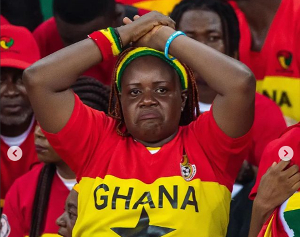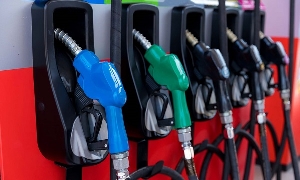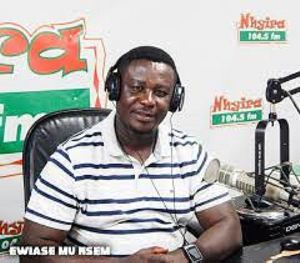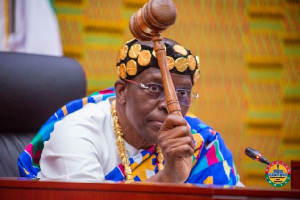In my BBC interview on Tuesday, the presenter focused on what President Daniel Moi’s legacy would be, especially as I had been quoted in the New York Times as saying (unexpectedly) that he had begun his tenure in 1978 on a high note.
So when and how did Moi go wrong, the presenter also asked. These are of course questions many Kenyans have been grappling with these past days.
So let me travel back to the horrors that began to unfold in 1982, which included killings and widespread torture that have come to be indelibly associated with the Moi legacy for most Kenyans.
But any discussion of the legacy (in the second half of this piece) must look at Moi’s important accomplishments, which not surprisingly have been drowned out by the horrors he inflicted on Kenyans over a lengthy period.
The 1982 events
Late one evening in March that year, I got a call from my close friend George Anyona, probably the most learned and crusading member our Parliament has ever had.
He was at the InterContinental Hotel with Michael Holman, the Africa editor of the Financial Times, and he said he could not convince Michael that Kenya was on the verge of a major upheaval.
George thought a fellow journalist might be more successful with Michael, who was about to return to London and write a lengthy report on Kenya.
I did not know of Holman (I was not very familiar or interested in foreign journalists those days), but the Financial Times was the most influential media on Africa for British and European policymakers.
So I joined the two and laid out for Michael the contours of the unfolding crisis.
Serious trouble was brewing primarily because President Moi was out of his depth and was unable to defuse the multiple challenges besetting his regime.
In the process, he managed to alienate virtually every segment of society.
The strongest sign of his administration’s incompetence was that the civil service, and more important the crucial army and police forces whose support Moi needed at this unstable time, had in the last two months been paid their salaries very late.
LOOMING DISASTER
In addition, trade unions, university lecturers, lawyers and leaders of the Law Society of Kenya and other professionals, along with most Kenyans suffering from widespread shortages, were ready to revolt. There were numerous wildcat strikes.
We had a very good discussion, but while Michael, a hard-nosed journalist, agreed the situation was troubling, he said we had not pointed to anything specific that indicated that broad turmoil was imminent.
It was not just Holman we wanted to convince. Anyona and I were part of a small group that was convinced that a political disaster and an outright Moi-led dictatorship were impending.
We were quietly planning to form and seek registration for a new political party to challenge the regime.
It was decided that I should travel to Dar es Salaam to brief Tanzanian President Mwalimu Nyerere about our fears for Kenya.
made the arrangements but at State House in Dar es Salaam, it was decided that because of the sensitivity of the issues and my known closeness to former Vice-President Jaramogi Oginga Odinga, I should not see Mwalimu but brief his Aide de Camp, Major Joseph Butiku, who obtained a response from Mwalimu to take back to Kenya.
CRACKDOWN
In the following weeks, the political situation rapidly deteriorated and President Moi launched a severe, sustained and society-wide crackdown unseen in our history till then.
Numerous political leaders, among them lawyers who represented detained Kenyans, university lecturers, writers and activists, were arrested without trial and subjected to vicious treatment.
Among those arrested was my then-closest friend Wan’gondu wa Kariuki, who had run in the Nyeri by-election following the arrest of MP Waruru Kanja in 1981.
Warned by a policewoman who supported Viva magazine, I myself had fled Kenya for London in early June.
Mr Moi’s staunch fans excepted, virtually the entire nation was enraged by a crackdown that had no precedent in Kenya.
The widespread disaffection among key influential constituencies and the new burdens on the poor, intensified by the passage of a new law that formally put paid to democracy by making it illegal to try to form a new political party, produced new levels of fear unseen by Kenyans.
It was amid this growing alarm that the abortive but immensely bloody Air Force coup of August 1 took place.
INCLUSIVITY
The aftermath saw the emergence over the years of yet greater repression, killings and gruesome torture of activists and a dictatorship that further wiped out virtually every vestige both of democratic rule and the protections the independence Constitution had provided Kenyans.
One of the great canards that President Moi and his supporters were able to foist on Kenyans is that the brutality that the security forces unleashed on Kenyans from 1982 onwards was unavoidable as his opponents had crossed all boundaries when they tried to mount the coup against the Kenyan people and a democratic government.
The facts are irrefutable: it was the crackdown and dispensing of civil liberties that triggered the coup, however illegal and unacceptable that was.
What went wrong? As I recounted last week, Mr. Moi began his presidency well.
Knowing he had to build new support for his regime, he released all of Mzee Kenyatta’s political prisoners, reintegrated into government popular representatives of major communities like the Luo, Luhya, and Kamba that had been politically marginalized under Mzee Kenyatta, and subsequently Somalis and other smaller communities who had never had any representation.
Mr. Moi also was able to converse with ordinary Kenyans about issues that affected them every day, assuring them he would defend them.
FEW TECHNOCRATS
These new freedoms early in the Moi presidency allowed a higher level of pro-democratic organising, with people like Jaramogi Oginga Odinga, George Anyona, Koigi wa Wamwere, Bildad Kaggia, Chelagat Mutai, Waruru Kanja and Wangari Maathai combining with university lecturers and Law Society of Kenya attorneys and other professionals seeking change.
So ironically, these freedoms that President Moi introduced were among the many realities that began to weaken him, as he was unable to manage them well.
For one, Mr Moi as vice-president had been hemmed in by the State apparatus, and was hence a relative novice early on in the power games that dictate State power.
Indeed, after the challenges his predecessors Jaramogi and Joseph Murumbi posed for Kenyatta, Mr Moi was chosen for his relative docility, which he lived up to.
In addition, while there were a number of accomplished Kalenjin political leaders, Mr Moi could not draw upon a seasoned cadre of Kalenjin technocrats as there were hardly any in the senior civil service and other elite institutions.
Nicholas Biwott was the only senior Kalenjin government official, and Bethuel Kiplagat had been the head of the National Christian Council of Kenya.
Finally, Mr Moi had relied heavily on Attorney-General Charles Njonjo to wend his way to State House, but that was now a strained relationship.
ECONOMIC CONTRADICTIONS
It is true that the powerful and determinedly ambitious Kikuyu elite around former President Kenyatta who dominated major aspects of State, political and economic power were trying to weaken him.
But too much has been made of this. Given the wealth and power of this Kikuyu elite, it is easy to believe that the Kikuyu are a monolithic force, but they are not.
Among the progressives who fought President Kenyatta were a large number of prominent Kikuyus like Ngugi wa Thiong’o, Micere Mugo, Koigi wa Wamwere, Mirugi wa Kariuki, Kamoji Wachira and Maina wa Kinyatti.
In addition, JM Kariuki’s assassination in 1975 had made clear that it was Central Province that was riven by the country’s most acute economic contradictions, and its people were the most class-conscious.
The utterly poor, dispossessed and landless could be found in all Kenyan provinces but it was only in Central they lived alongside unimaginable wealth and large, multi-thousand-acre ranches that were not even being cultivated.
As President Moi struggled to cope with containing the mounting demands from Kenyans, I was distressed to see some of the learned and ideological minds that had supported greater openness as a way to battle his opponents begin to tell me that Mr. Moi needed to use the power of State to crack down on those challenging him politically.
JOMO'S TEAM
The give and take of negotiations were not working, they felt. This was a huge blunder that backfired, leading to the multiple crises I have described above.
Jomo Kenyatta had infinitely more severe challenges to manage as he opposed the demands of powerful forces that had fought for freedom and land, but his was a much more politically skilled and sophisticated team that helped him consolidate power within State House and his closest allies.
Africa News of Sunday, 16 February 2020
Source: nation.co.ke

















